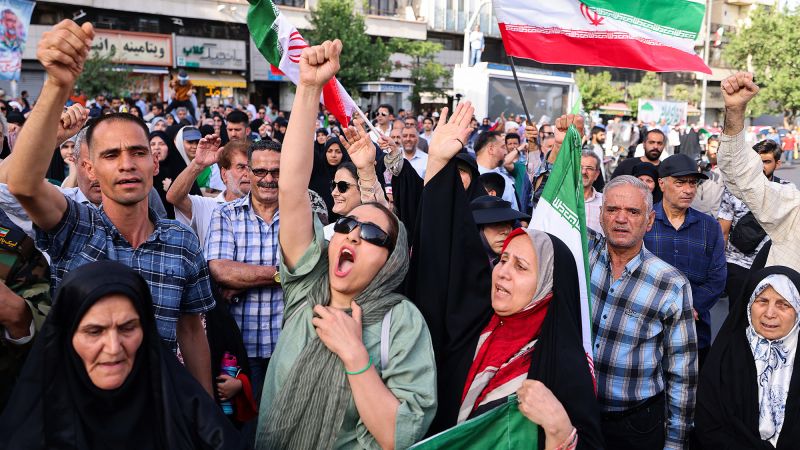What Happened
In recent days, tensions between Iran and the United States escalated dramatically following a series of U.S. airstrikes targeting Iranian nuclear facilities. On June 22, 2025, U.S. President Donald Trump announced that American forces had “obliterated” three key nuclear sites in Iran, a claim that has been met with skepticism regarding the actual impact on Iran’s nuclear capabilities. The strikes reportedly involved advanced weaponry, including “bunker buster” bombs designed to penetrate deep underground facilities, and were executed with a high degree of military coordination.
In response, Iranian military officials and lawmakers have vowed retaliation, asserting that the U.S. will face consequences for its actions. Iran’s Supreme Leader, Ayatollah Khamenei, has yet to publicly comment on the situation, but military commanders have issued strong warnings, indicating that Iran will not back down and will respond decisively. Concurrently, the conflict has drawn international attention, with countries like China and Russia condemning the U.S. actions and calling for de-escalation.
Key Details
- U.S. Strikes: The U.S. conducted airstrikes on June 22, targeting three Iranian nuclear facilities, including the Fordo site, which is buried deep underground. The operation involved B-2 stealth bombers and Tomahawk cruise missiles, marking a significant escalation in U.S. military involvement in the region.
- Iran’s Response: Iranian officials have promised a strong response, with military leaders stating that the U.S. has “opened the door to retaliation.” They have suggested various forms of retaliation, including potential attacks on U.S. bases in the region and threats to close the Strait of Hormuz, a vital shipping route for global oil supplies.
- International Reactions: China criticized the U.S. for damaging its credibility as a global power and called for a ceasefire and peace negotiations. Russia also condemned the strikes, labeling them an irresponsible act that violates international law. Meanwhile, oil prices surged by approximately 10% amid fears of further conflict and disruptions in the Strait of Hormuz.
Multiple Perspectives
The situation has elicited a range of responses from various stakeholders:
-
U.S. Perspective: The Trump administration views the airstrikes as a necessary measure to prevent Iran from advancing its nuclear program. Officials claim the operation was successful in significantly damaging Iran’s nuclear capabilities, though the actual extent of the damage remains unclear.
-
Iranian Perspective: Iranian officials and hardliners argue that the U.S. strikes constitute an act of war and have called for a robust military response. They emphasize that the U.S. has violated Iranian sovereignty and that any retaliation will be severe and unpredictable.
-
International Community: Countries like China and Russia have expressed strong opposition to the U.S. actions, framing them as destabilizing and counterproductive. China’s ambassador to the UN stated that the U.S. has harmed its own diplomatic standing, while Russia condemned the strikes as a violation of international law.
Context & Background
The U.S.-Iran relationship has been fraught with tension for decades, particularly since the U.S. withdrew from the Joint Comprehensive Plan of Action (JCPOA) in 2018 and reinstated sanctions against Iran. The current conflict is part of a broader pattern of hostilities that have included military confrontations, proxy wars, and diplomatic standoffs. The recent escalation follows a series of Israeli airstrikes on Iranian military targets, which have further complicated the regional security landscape.
The Strait of Hormuz is a critical chokepoint for global oil transportation, with approximately 20% of the world’s oil passing through it. Any disruption in this area could have significant implications for global energy markets and economic stability.
What We Don’t Know Yet
Several uncertainties remain regarding the current situation:
-
Extent of Damage: While U.S. officials claim significant damage to Iran’s nuclear capabilities, independent verification of the strikes’ effectiveness is still pending. Reports from Iranian sources have downplayed the extent of the damage, creating a discrepancy in narratives.
-
Iran’s Response: The specifics of how Iran will retaliate remain unclear. While military leaders have issued threats, the actual course of action could vary widely, ranging from targeted strikes on U.S. interests to more indirect forms of retaliation.
-
International Reactions: The responses from other countries, particularly those with vested interests in the region like Japan and European nations, are still evolving. Their positions on the conflict could influence diplomatic efforts and potential resolutions.
In summary, the situation in Iran following the U.S. airstrikes is complex and rapidly evolving, with significant implications for regional and global stability. The interplay of military actions, political rhetoric, and international diplomacy will be crucial in determining the next steps in this ongoing conflict.


